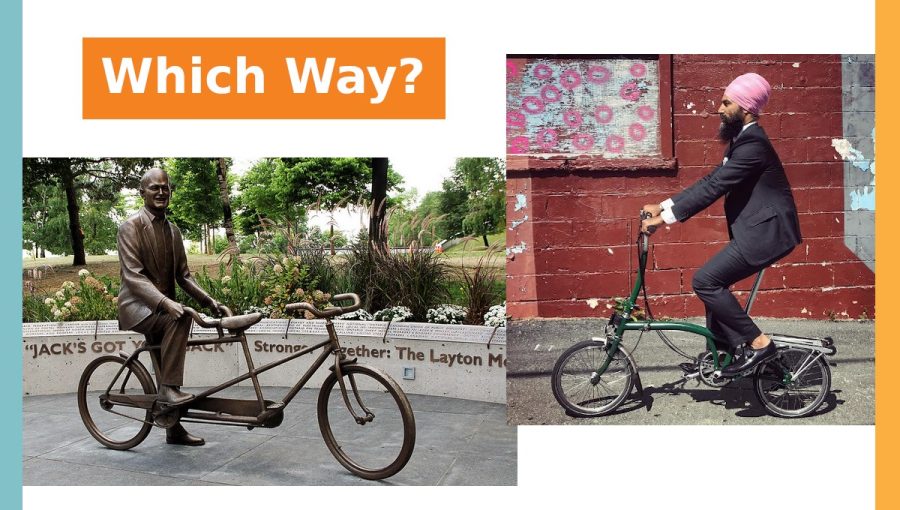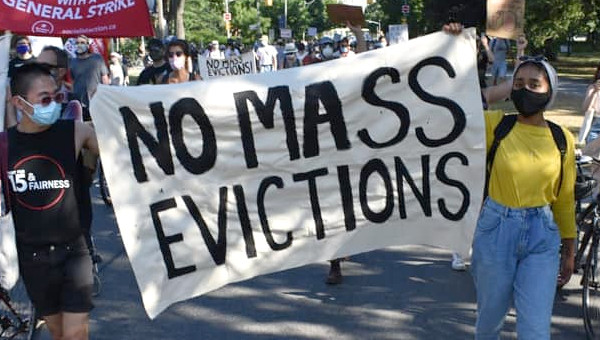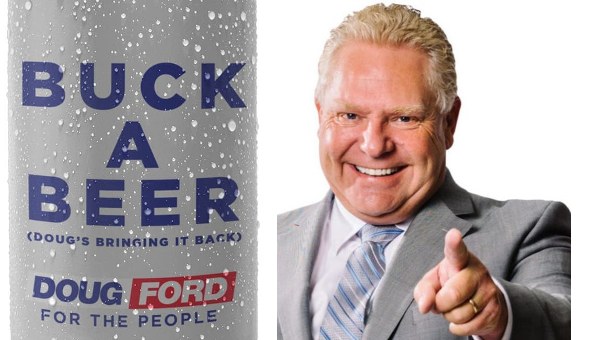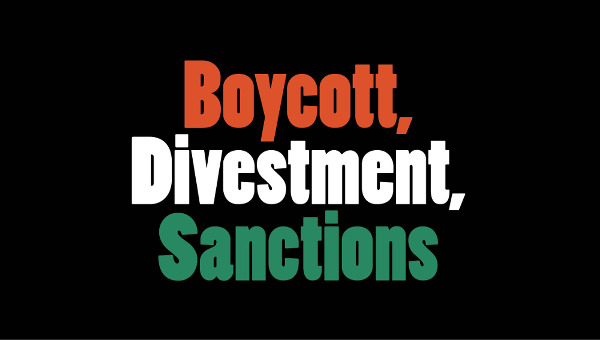The NDP Leadership Race: Sleepwalking Toward the Centre?
For the first time, the New Democratic Party (NDP) is holding a leadership race that involves picking the leader of the Official Opposition and someone that can, with some credibility, claim a decent shot at becoming the next Prime Minister of Canada. The federal NDP should be in the public spotlight like never before, but they aren’t. Whether this is more a result of the dynamic of the leadership race or due to the mainstream media’s disinterest in the NDP is unclear, but both factors are obviously at play.
Part of the problem is that there are too many contestants and maybe four or five real contenders, rather than two clear front-running rivals. Not only have the debates been crowded with too many challengers speaking with too little time, but clear policy differences have not been highlighted.
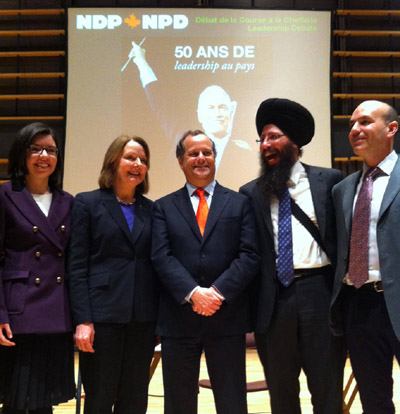 A central reason for this is that the NDP’s political trajectory was solidified by Jack Layton and his electoral breakthrough of 2011. Layton’s legacy is a modernized and professionalized electoral machine. Ideologically, as I wrote previously, “the NDP under Layton…accelerated its retreat from social democracy. Without any agenda to significantly reform capitalism, the NDP has been reduced to a left-liberal formation.” In this leadership race, the ideological or programmatic basis of the party is not up for question and no one is really challenging its positioning as a moderately progressive centre-left party. No wonder it’s been broadly considered a snoozefest.
A central reason for this is that the NDP’s political trajectory was solidified by Jack Layton and his electoral breakthrough of 2011. Layton’s legacy is a modernized and professionalized electoral machine. Ideologically, as I wrote previously, “the NDP under Layton…accelerated its retreat from social democracy. Without any agenda to significantly reform capitalism, the NDP has been reduced to a left-liberal formation.” In this leadership race, the ideological or programmatic basis of the party is not up for question and no one is really challenging its positioning as a moderately progressive centre-left party. No wonder it’s been broadly considered a snoozefest.
Rather than probing the candidates or the leadership race, much of the media seems to have happily returned the Liberals and Bob Rae to the status of the main alternative to the Conservative government. Still, despite what we’ve heard (or not heard) through the mainstream media, the federal NDP’s leadership race is full of capable politicians and interesting characters.
The Candidates
The first candidate to enter the race was Brian Topp. Basically unknown to the general public, Topp has extensive backroom experience with the NDP in Quebec, Saskatchewan and Ottawa. Closely associated with Jack Layton, he became the NDP president in 2011. If he wasn’t running for party leadership he would be preparing the BC NDP for their upcoming provincial election. The primary problem is that he’s never run for public office at any level. Needless to say, the jump from the party backrooms to retail politics isn’t easy.
Many observers, inside and outside the NDP, surmised that Topp’s leadership bid was a pre-emptive strike against the coronation of the more obvious successor, Thomas Mulcair. Renowned for his quick wit and quick temper, Mulcair has been the NDP MP for the Montreal riding of Outremont since winning a 2007 by-election. No sooner had Jack Layton died than a negative whispering campaign began about Mulcair’s ego, abrasive personality and his inability to work with others. A former provincial cabinet minister in a Quebec Liberal government (led by a former federal Progressive Conservative, Jean Charest), Mulcair is an experienced politician and a fearsome debater.
Female leaders are still a rarity in the male-dominated world of Canadian politics. Let’s remember, the federal Liberals have never even come close to choosing a female leader. Many Canadians’ perceptions of ‘leadership’ are still highly gendered and this remains one of the many barriers facing women in politics. Thus, even in a field of eight candidates, it’s notable to have two strong female candidates – Peggy Nash and Niki Ashton. Gender is certainly not irrelevant within this contest, but these two candidates are more notable for other reasons.
For Nash, the more ground-breaking aspect of her leadership bid is that she is a trade unionist. Believe it or not, and pushing aside all those media frames about union-domination of the party, the federal NDP has never had a trade unionist like Nash for a leader. As a lawyer, former leader David Lewis worked for the labour movement, but the rest of the federal CCF-NDP leaders have been preachers, teachers and social workers. Nash became a labour movement activist through her job as an Air Canada ticket agent. Eventually she worked her way up through her union, becoming a negotiator and an assistant to the president of the Canadian Auto Workers. An MP from Toronto (from 2006 to 2008), she served as party president before returning to the House of Commons in 2011.
Fairly or not, Niki Ashton’s leadership campaign has been most notable for the fact that she’s 29 years old (or as she points out, she will be 33 by the time of the next federal election). An MP representing the northern Manitoba riding of Churchill since 2008, she’s actually one of the more experienced MPs in the race. Her leadership challenge raises interesting and important questions about young people in politics; unfortunately, her promise of a “New Politics” remains rather vague.
Romeo Saganash is a Cree from Eeyou Istchee (the James Bay region of Quebec) and a residential school survivor. Elected in 2011 as one of the NDP’s few star candidates in Quebec, he’s a rookie MP. However, trained as a lawyer, he’s been a prominent Cree leader for years and was involved in the negotiation of La Paix des Braves – the 2002 agreement between the James Bay Cree and the Quebec government – as well as the United Nations Declaration on the Rights of Indigenous Peoples.
British Columbia MP Nathan Cullen has gained very positive media reviews for his confident and engaging performances and his sense of humour. In terms of his energetic and positive demeanour, he’s the most Laytonesque. Unfortunately for him, his proposal for cooperation with the Liberals and Greens (through the holding of joint nomination contests) to defeat the Conservatives is likely to limit his growth. The proposal helped his campaign garner attention, but many New Democrats wonder why they should cooperate with the Liberals now that they’ve finally reached second place. With his debate performances and his base in vote-rich BC he clearly has the potential to move into the first tier of candidates but his position on cooperation with other parties may limit his chances of picking up second choice votes.
Martin Singh is a pharmacist from Nova Scotia. As a young adult, he converted to the Sikh religion and currently leads the NDP’s Faith and Social Justice Commission. As a business person with an MBA, Singh has described himself as “a pro-business member of the NDP.” His hallmark policy is a national pharmacare program. He’s an interesting candidate for the leadership of the NDP and, while considered a longshot, it’s surprising that the media hasn’t given him more attention. On the other hand, he has the same lack of experience running for public office as Brian Topp.
Finally, Paul Dewar has been the MP for Ottawa Centre since 2006. An elementary school teacher before he entered politics, Dewar has served as the NDP’s foreign affairs critic. A middle-of-the-road New Democrat, he has been frequently mentioned as belonging to the pack of frontrunners along with Mulcair, Topp and Nash. However, Dewar’s primary drawback is the weakness of his French-language skills. By all accounts, he has been working hard on his French and even improving from debate to debate, but there is a widespread expectation that the next leader of the NDP should be able to hit the ground running in both of Canada’s official languages.
Policies and Positioning: Leaning Right
To some extent, the mainstream media narrative about a boring race is understandable. As has been well noted, there has been very minimal conflict over policy. This is not the 1995 leadership convention (in the aftermath of the devastating 1993 election) or the 2001 policy convention at which the NDP’s very existence and future direction was at stake. The federal NDP has some real vulnerabilities but it is clearly in a position of historic strength. Layton brought the NDP into Official Opposition status by shifting the party to the right, professionalizing the party and capitalizing on the weakness and incompetence of the Liberals. The ‘Party that Jack Built’ will not be shifting direction any time soon.
It is difficult to place the candidates on a political spectrum based on either their policies or their endorsements. Some candidates have released policy papers, while others have been less forthcoming. Many of the ‘policies’ are lists of bullet points with few details. As well, the nature of the candidate endorsements has been all over the place, reinforcing the view that this race is about personalities rather than policies and ideology.
It’s probably accurate to suggest that all of the candidates want more money for infrastructure spending (especially transportation and affordable housing), social programs (healthcare and pensions) and public services (post-secondary and training). With that much to agree upon it’s no wonder the debates can get a little sleepy. In terms of foreign policy, most candidates have been critical of Harper while offering little more than platitudes.
Thus far, Thomas Mulcair has done little to define his policy agenda or clarify his political beliefs. Perhaps he is taking a classic front-runner approach and trying to coast to the finish-line while avoiding anything controversial. His main economic policy plank (with very minimal details) is a cap and trade policy to address greenhouse gas emissions. His rhetoric and his background suggest that he is on the right wing of the NDP. Somewhat surprisingly he has not felt obligated to define his commitment to social democratic nostrums beyond policies on pensions and women’s equality.
Particularly notable has been the campaign silence over Palestine. In the past, Mulcair has been an extremely loyal ally of Israel. In 2010, he famously attacked Vancouver East MP Libby Davies over comments she made supportive of the boycott, divestment and sanctions (BDS) campaign against Israel and critical of the Israeli occupation of Palestinian territories. During this leadership race, Mulcair has not been pushed to address his stance toward the Middle East. One might be tempted to say that under Mulcair’s leadership the NDP would swing more in the direction of supporting Israel. While likely true, it should be pointed out that under the leadership of Alexa McDonough and Layton, outspoken criticism of Israel and advocacy on behalf of Palestinian rights have generally been limited to a few left-wing voices, such as Davies or former MP Svend Robinson. Nobody in the leadership race has confronted Mulcair over this issue.
Brian Topp has attempted to position himself as a solid and loyal New Democrat, somewhere to the left of Mulcair, staking out a more left position than he did in his recent book, How We Almost Gave the Tories the Boot. For example, Topp’s tax policy (raising personal income taxes on the rich, raising corporate taxes and increasing taxes on capital gains and stock options) is relatively bold, progressive and detailed. In the context of the Occupy movements and the focus on inequality, it is also politically timely. In the context of an NDP leadership race, perhaps it also reveals a good strategic reading of the party’s membership.
At the same time, it is difficult to nail down Topp’s positioning. He also proposes lowering taxes on small business and presents himself as a disciple of the Saskatchewan NDP and Roy Romanow’s brand of fiscal responsibility. This took a particularly illuminating turn when one of his columns for the Globe and Mail website extolled the austerity program of the social democratic government in Greece.
Surprisingly, Topp has been endorsed by some on the left of the NDP, most notably MPs Libby Davies from Vancouver and Alexandre Boulerice from Montreal. The support of Davies and Boulerice lends credence to the theory that Topp primarily represents an alternative to Mulcair. Last spring Boulerice was one of two NDP MPs to endorse the Canadian Boat to Gaza (the other, Alex Atamanenko, has endorsed Cullen), though Boulerice later retracted his endorsement at the behest of Layton.
Peggy Nash has generally been considered the left candidate in this leadership race. She’s been endorsed by some on the left of the NDP, like former Ontario MPP Peter Kormos, but she also has the support of more mainstream New Democrats such as former federal leader Alexa McDonough. Her policy documents emphasize industrial innovation and value-added exports and harken back to longstanding debates within the NDP over an industrial strategy. Ultimately she points to “the experience of other successful industrial and export powers: Finland, Korea, Brazil and Germany.” In other words, this is not radical (let alone socialist) stuff. This form of industrial policy has significant limitations (both ecological and in terms of accepting and reinforcing the focus on national competitiveness) but at least it involves trying to push the NDP to address larger economic issues. As a result, she’s been endorsed by five progressive economists: Marjorie Griffin Cohen, Andrew Jackson, Gordon Laxer, Jim Stanford and Mel Watkins.
Paul Dewar grew up in Ottawa, but he did live for a time in Manitoba and is very well connected to the powerful (and politically moderate) NDP machine in that province. Perhaps surprisingly, Dewar reportedly has the support of even more Manitoba MLAs than Ashton.
Like Mulcair, most of the other candidates (including Ashton, Cullen, Dewar, Saganash and Singh) haven’t really outlined their overall economic approach. Dewar and Topp both talk about tax incentives for small business, which was part of the NDP platform last election. Singh has a policy on supporting entrepreneurship. Similarly, Cullen told the editorial board of the Toronto Star that he’s “pro-business.”
The overall push from this field of contenders is toward the right and the middle of the political spectrum. Mulcair is a former Quebec Liberal. Cullen wants to cooperate with the Liberals. Many want to appeal to small and medium business and see the NDP in Saskatchewan and Manitoba as role models. On the other hand, the organized left within the NDP is weak. The $15,000 entry fee hindered the ability of the NDP’s Socialist Caucus to put forth a candidate. Thus far, the Socialist Caucus has argued that none of the available candidates “offer a turn to the left.” With the possible and partial exception of Peggy Nash, this is entirely accurate. It seems likely that the entire field of candidates would accept and embrace Brian Topp’s declaration, outlined in one of his position papers, that “A belief in the coupling of a market economy with wide-ranging social rights defines social democracy.” Some of the language of the Occupy movements (the 1% versus the 99%) has entered the campaign, but no one is talking about building a grassroots activist movement.
Sustaining Layton’s Legacy (of Moderation)
The NDP’s massive but tenuous breakthrough in Quebec weighs heavily on the minds of most New Democrats. The party is faced with the challenge of trying to maintain those Quebec seats while gaining support in the rest of Canada. French-English bilingualism has become a necessity for the NDP leadership.
Robert Chisholm learned this and dropped out of the leadership race. Dewar’s French is a work in progress and that is considered a major knock against him. Topp and Mulcair are both from bicultural (French-English) families and are fluently bilingual. Topp grew up in Quebec and has indicated that he would seek a parliamentary seat in Quebec. Saganash is also from Quebec. Along with his first language – Cree – he is fluent in French and English. But it is certainly Mulcair who gains the most electoral advantage from his position as a Montreal-based MP and former member of the Quebec government. He is clearly the most prominent NDP member and leadership contender from Quebec. Still, he is not seen as much of a leftist within Quebec politics and is certainly not associated with the nationalist movement in Quebec. That would seemingly place him in a bit of a disconnect with the NDP’s expected constituency in Quebec, but it may make him less vulnerable to right-wing attacks in the rest of the country, particularly from conservative forces and the mainstream media.
Politically there is much at stake in the NDP leadership race. Can the party find a spokesperson and leader capable of sustaining the electoral momentum of the Layton years? Can the NDP keep the Liberal Party down and out? Can they defeat the Harper government in the next election? The leadership convention takes place March 24th. There are indications that the contest may be picking up some steam. The most recent debate in Halifax on January 29th saw a few more signs of actual debate and disagreement. To some extent, the race will become more interesting and the mainstream media will (as the convention approaches) be forced to pay more attention. In the end however, we know that the larger political project of the NDP has been set in stone. The NDP’s role as a moderately left electoral party will carry on. Building an activist, socialist movement is not their project. •
This article first appeared on the New Socialist webzine site.


